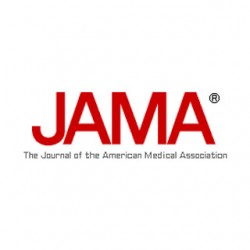You are looking at an archived version of our site. Please visit thepcc.org for a fresh, new experience!
You are here: Array » Association of Pioneer ...
Association of Pioneer Accountable Care Organizations vs Traditional Medicare Fee for Service With Spending, Utilization, and Patient Experience

ABSTRACT
Importance The Pioneer Accountable Care Organization (ACO) Model aims to drive health care organizations to reduce expenditures while improving quality for fee-for-service (FFS) Medicare beneficiaries.
Objective To determine whether FFS beneficiaries aligned with Pioneer ACOs had smaller increases in spending and utilization than other FFS beneficiaries while retaining similar levels of care satisfaction in the first 2 years of the Pioneer ACO Model.
Design, Setting, and Participants Participants were FFS Medicare beneficiaries aligned with 32 ACOs (n = 675 712 in 2012; n = 806 258 in 2013) and a comparison group of alignment-eligible beneficiaries in the same markets (n = 13 203 694 in 2012; n = 12 134 154 in 2013). Analyses comprised difference-in-differences multivariable regression with Oaxaca-Blinder reweighting to model expenditure and utilization outcomes over a 2-year performance period (2012-2013) and 2-year baseline period (2010-2011) as well as adjusted analyses of Consumer Assessment of Healthcare Providers & Systems (CAHPS) survey responses among random samples of beneficiaries in Pioneer ACOs (n = 13 097), FFS (n = 116 255), or Medicare Advantage (n = 203 736) for 2012 care.
Exposures Beneficiary alignment with a Pioneer ACO in 2012 or 2013.
Main Outcomes and Measures Medicare spending, utilization, and CAHPS domain scores.
Results Total spending for beneficiaries aligned with Pioneer ACOs in 2012 or 2013 increased from baseline to a lesser degree relative to comparison populations. Differential changes in spending were approximately −$35.62 (95% CI, −$40.12 to −$31.12) per-beneficiary-per-month (PBPM) in 2012 and -$11.18 (95% CI, −$15.84 to −$6.51) PBPM in 2013, which amounted to aggregate reductions in increases of approximately −$280 (95% CI, −$315 to −$244) million in 2012 and −$105 (95% CI, −$148 to −$61) million in 2013. Inpatient spending showed the largest differential change of any spending category (−$14.40 [95% CI, −$17.31 to −$11.49] PBPM in 2012; −$6.46 [95% CI, −$9.26 to −$3.66] PBPM in 2013). Changes in utilization of physician services, emergency department, and postacute care followed a similar pattern. Compared with other Medicare beneficiaries, ACO-aligned beneficiaries reported higher mean scores for timely care (77.2 [ACO] vs 71.2 [FFS] vs 72.7 [MA]) and for clinician communication (91.9 [ACO] vs 88.3 [FFS] vs 88.7 [MA]).
Conclusions and Relevance In the first 2 years of the Pioneer ACO Model, beneficiaries aligned with Pioneer ACOs, as compared with general Medicare FFS beneficiaries, exhibited smaller increases in total Medicare expenditures and differential reductions in utilization of different health services, with little difference in patient experience.
Full Resource/Source: JAMA
Secondary menu
Copyright © 2024 Primary Care Collaborative



